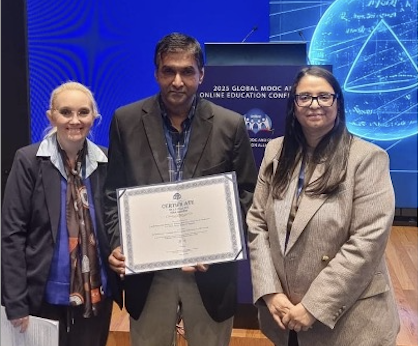Prof Brenda Schmahmann of the Faculty of Art, Design and Architecture is the NRF research
chair in South African Art and Visual Culture – one of five prestigious SARChI chairs awarded to
the University of Johannesburg that were announced at a celebratory breakfast in Cape Town on 2 September 2015. She is the very first Tier 1 SARChI incumbent whose scholarship and education is in Art History specifically.
Prof Schmahmann spoke to Tamara Morgan, Marking Executive in the FADA, about this exciting appointment and its implications for the faculty
TAMARA MORGAN: Can you please explain what “SARChI” is.
BRENDA SCHMAHMANN: “SARChI” is the acronym for the South African Research Chairs Initiative led by the Department of Science and Technology and the National Research Foundation, and that was first introduced in
2006. The National Research Foundation explains that the primary goal of SARChI “is to strengthen and improve [the] research and innovation capacity of public universities”, thus enabling them to produce highly capable postgraduate students as well as excellent and internationally- competitive research outputs.
It indicates that the key objectives of this initiative are to:
-
Expand the scientific research and innovation capacity in South Africa;
-
Improve South Africa’s international research and innovation competitiveness while responding to social and economic challenges of the country;
-
Attract and retain excellent researchers and scientists;
-
Increase the production of masters and doctoral graduates;
-
Create research career pathways for young and mid-career researchers, with a strong research, innovation and human capital development output trajectory. NRF Research Chairs
One can be appointed at either Tier 1 or Tier 2. Tier 1 appointees are established researchers who have achieved international recognition for their work. Tier 2 appointees are established researchers who have the potential to achieve international recognition within five to ten years.
TAMARA MORGAN: What are the roles and responsibilities of the SARChI Chair?
BRENDA SCHMAHMANN: An individual motivating for a SARChI chair presents
a detailed five-year research programme with a proposed set of deliverables immediately related to his or her own research expertise. These deliverables pertain to research outputs as well as the development of research capacity and the enabling of postgraduate enrolments and success.
My own research programme has three objectives – namely to develop scholarship, enable research capacity and develop postgraduate work on
- Gender and Visual Culture in South Africa;
- Public Art in South Africa and
- Art and Design in the Context of Community Projects in South Africa.
There is synergy between my own research and expertise in each of these three areas and work that is being done by others within FADA. My primary role and responsibility is to further develop excellence and research outputs within these three rubrics.
TAMARA MORGAN: What is the duration of the appointment for a Chair?
BRENDA SCHMAHMANN: Each chair has the potential to have a fifteen-year lifespan. An evaluation takes place after a five-year period to assess whether funding can be continued into its next five- year cycle.
TAMARA MORGAN: How might your being awarded this Chair have an impact on FADA specifically?
BRENDA SCHMAHMANN: The appointment of the NRF Research Chair in South African Art and Visual Culture gives us an extraordinary opportunity to enhance the academic project in FADA, and will complement the important work in that regard which has been done, and continues to be done, by the Visual Identities in Art and Design (VIAD) centre.
Along with hosting high-level scholars who have expertise which coincides with the interests of faculty members as well as organising conferences, symposia or publishing initiatives on topics where not only established but also emerging researchers at the university have opportunities to participate, my intention is to enable initiatives focused on enhancing scholarly writing as well as offer seminars where people can test their work. I also welcome this opportunity to allow my own contacts to benefit people in my faculty, and in that way to offer colleagues increased opportunities to establish national and international links.
I envisage hosting postdoctoral fellows who, besides working on their own publications, will undertake projects which enhance scholarship and research within the university – whether through the organisation of conferences or seminar programmes, the mentoring of postgraduates, or through undertaking curatorial projects, for example. And perhaps most crucially of all, my intention is to contribute to the faculty and the university increasing its postgraduate cohort and thus to work towards enabling retired researchers to be replaced by an appropriately qualified younger generation.
In summary, then, the appointment of this Chair is not simply a great honour for FADA and a statement of its standing but also offers a wonderful chance for staff and postgraduates to develop their own research capacities and profiles in significant ways.



